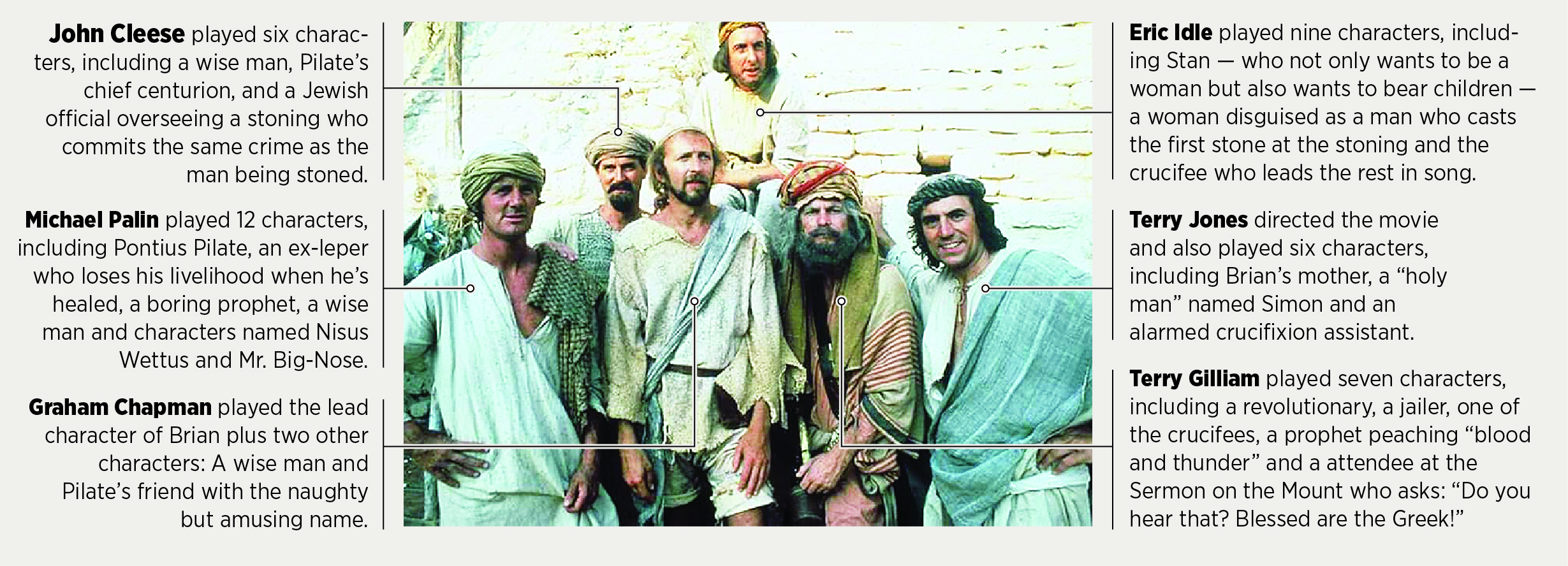
A Very Naughty Boy: The story of The Life of Brian, and how it came to the silver screen
On Aug. 17, 1979 — 45 years ago Saturday — the British comedy troupe Monty Python released a film in the U.S. poking fun at religious institutions, involving a man who is repeatedly mistaken for Jesus of Nazareth.
“The Life of Brian” didn’t open in the U.K. until November — in part, because of the strong negative reaction from religious leaders. However, the Pythons ended up parlaying that opposition into a successful marketing campaign.
The film was “a motion picture destined to offend nearly two-thirds of the civilized world,” they said, “and severely annoy the other third.”
Satirical? Or Blasphemous?
In 1975, the BBC TV comedy troupe Monty Python filmed an original movie — a satire of the legend of King Arthur — called “Monty Python and the Holy Grail.”
The film became an instant classic, but Python member Eric Idle grew weary of being asked repeatedly what would be the Pythons’ next project. He began telling them it would be “Jesus Christ: Lust for Glory.”
The troupe met over two weeks at Christmas 1977, in Barbados to decide on what their next project would really be. They immediately dismissed Idle’s snark as unworkable. As Idle himself later said, Jesus wasn’t “particularly funny. What he’s saying isn’t mockable, it’s very decent stuff.”
The next idea was to focus on a character named Brian, who would be the 13th apostle but kept missing all the important moments, such as the Last Supper. They finally settled on making Brian someone born in the stable next door to Jesus who was repeatedly mistaken for the Messiah throughout his life. This would allow the Pythons to ridicule some of their favorite targets: What had become of organized religion as well as 1970s left-wing British politics and various separatist movements.
“The Life of Brian” was filmed in Tunisia, where the desert planet scenes from “Star Wars” were filmed — and, in some cases, on the very sets which had been used the previous year to film the TV miniseries “Jesus of Nazareth.”
British film censors loved the film. They suggested only one change, where a character played by John Cleese says a naughty word. That was dubbed out for a less naughty word. The censors responded with an AA rating, which allowed viewers of all ages to see the film.
Still, the negative reaction from religious leaders was strong. Christians in both the U.S. and the U.K. picketed theaters where the movie was shown. Even Jewish leaders were offended. The president of the Rabbinical Alliance of America said “Never have we come across such a foul, disgusting, blasphemous film before.”
Cleese took note of the varied groups who took offense, remarking: “We’ve brought them all together for the first time in 2,000 years!”
But the strongest reaction was before the movie began production, by the studio that was to make the film ...
The Python's First Obstacle: A Loss of Funding
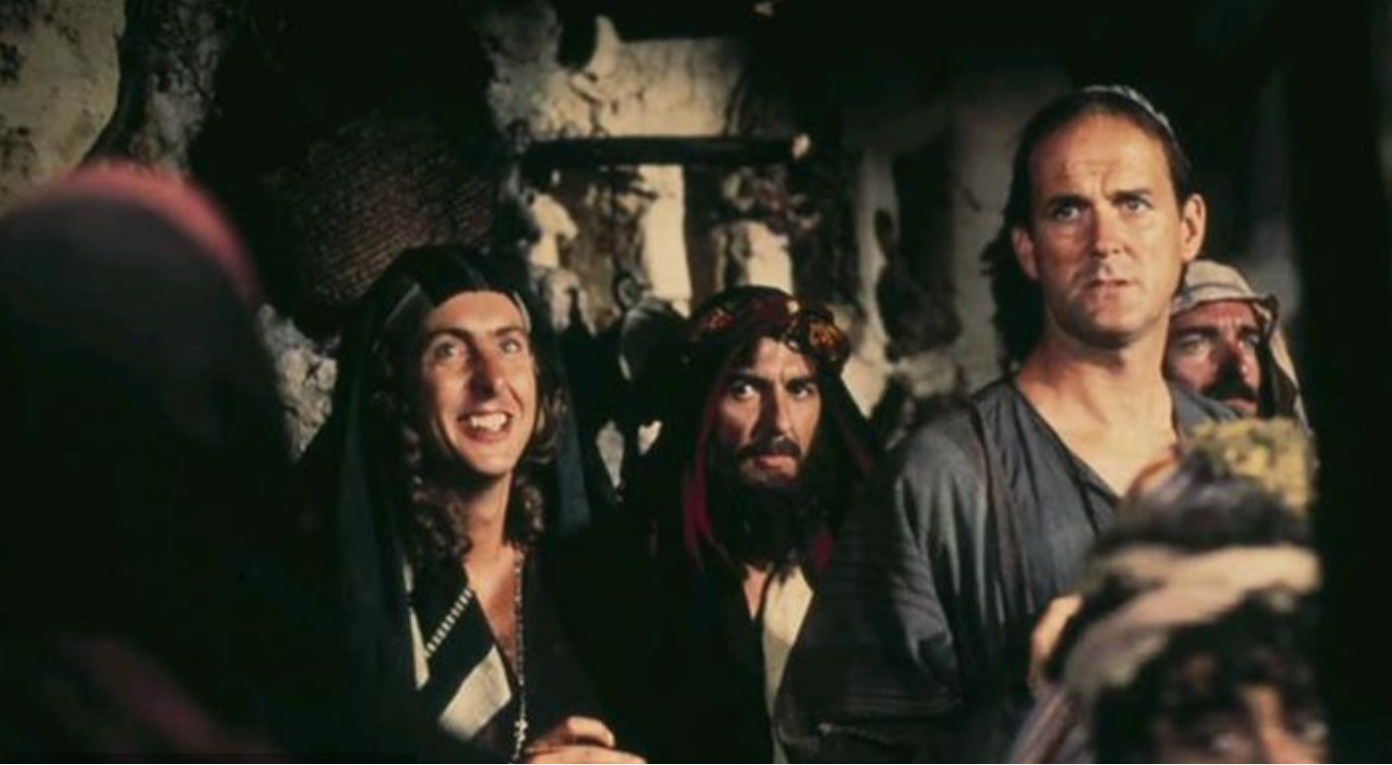
Two days before crews were to leave England for Tunisia, EMI Films pulled its funding for the movie: Python Terry Gilliam noted they must have finally read the script. Former Beatle George Harrison stepped up with $4 million in funding. The grateful Pythons gave Harrison a bit part as the owner of the Mount where a sermon is given. His one line: “ ‘Ullo.”
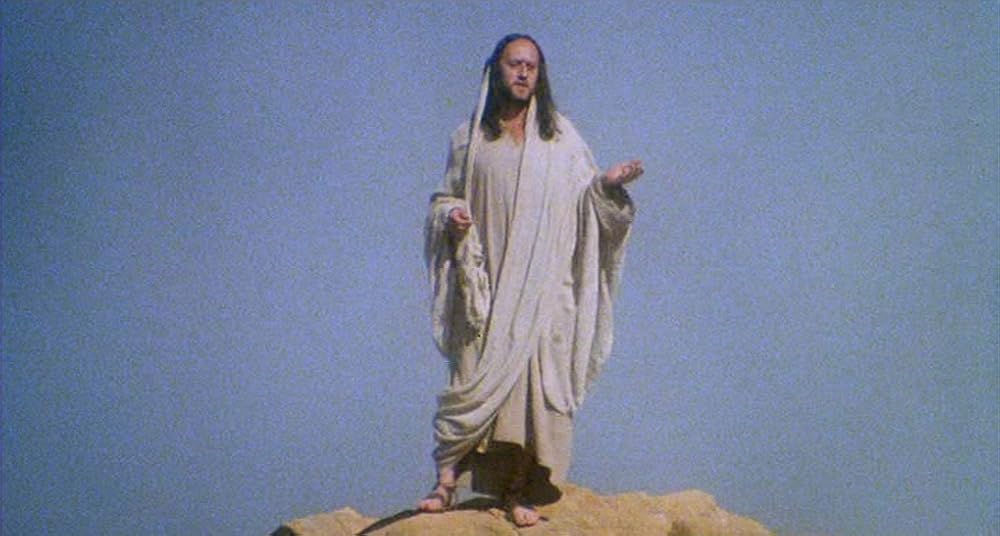
The character of Jesus does make a brief appearance in the film. Cleese wanted a former James Bond actor, George Lazenby, to play Jesus, so the poster could say: “George Lazenby IS Jesus Christ.” But Lazenby was tied up on another project. Jesus was played by Kenneth Colley, who would later play Admiral Piett in two “Star Wars” movie sequels.
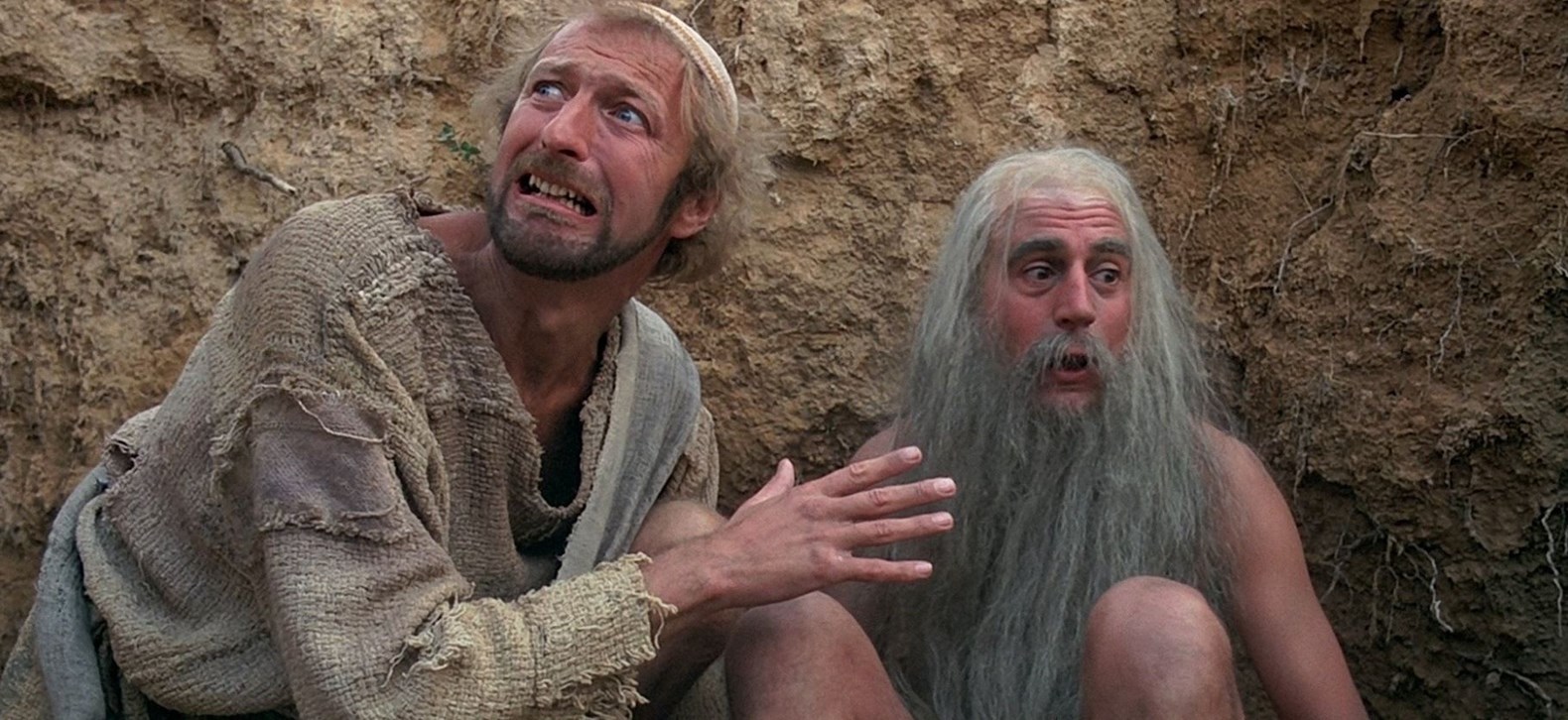
Cleese also wanted to play Brian, but the other Pythons insisted on giving the part to Graham Chapman. He had developed a drinking problem but wanted the part so badly that he dried himself out. Before he became a comic actor, Graham had earned a medical degree. He put that to use by serving as the production’s on-set medic.
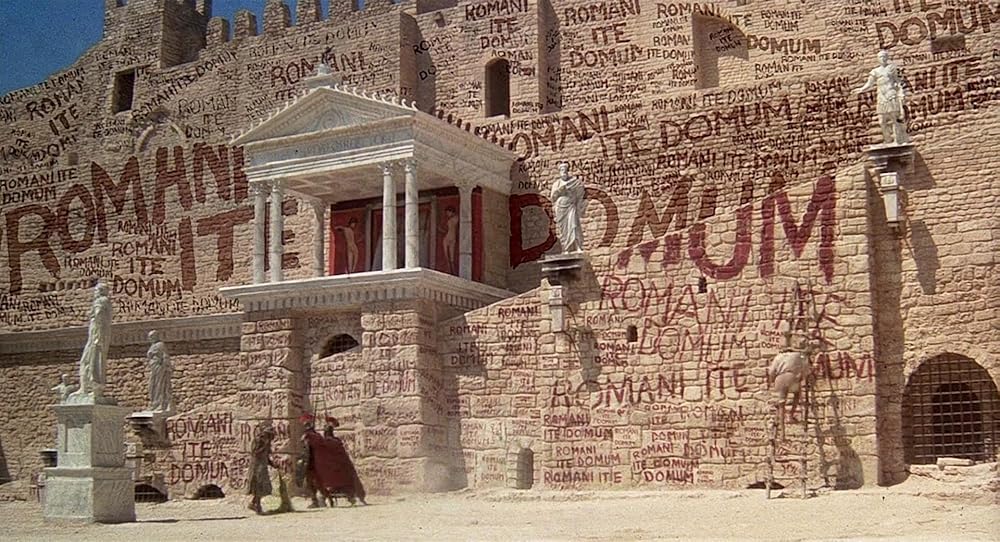
In one scene, the separatist group Brian joins tasks him with painting slogans on Roman governor Pontius Pilate’s palace. He’s caught by a guard played by Cleese, who corrects his Latin grammar and “sentences” him to write it 100 times more. The inside joke: Before he entered comedy, Cleese had been a Latin instructor.
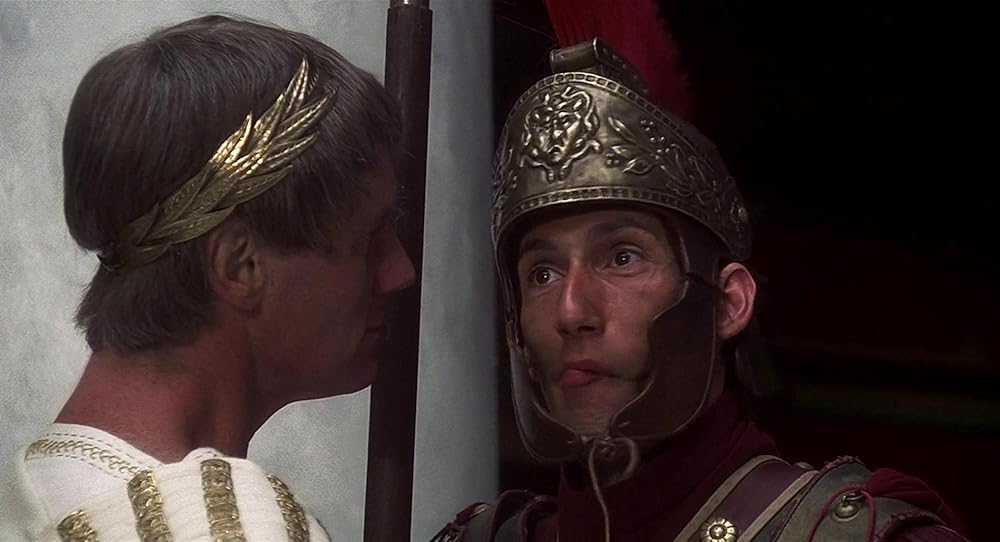
One of the film’s most memorable moments is when Pilate’s guards giggle as Pilate — played by Michael Palin — struggles through his lisp to say the naughty-sounding name of his friend. After the scene was rehearsed, all-new extras were brought in to play the guards and ordered to not laugh. So their struggles to keep straight faces was quite real.
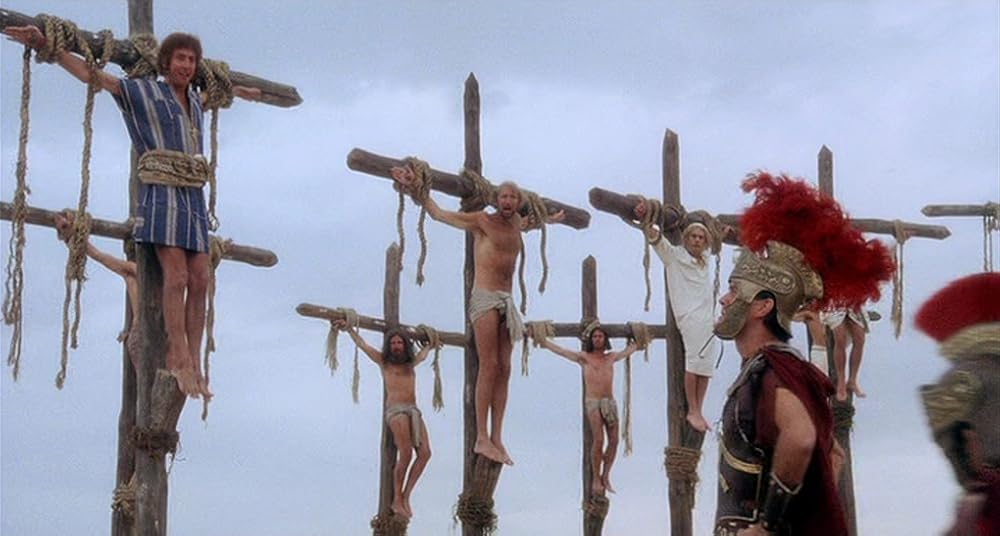
Pilate orders his guard to “welease Bwian,” but others being crucified that day confuse matters by claiming to be Brian. This parodies the 1960 Kirk Douglas film “Spartacus.” Then, one of the others being crucified — played by Idle — decides to cheer up the mood by leading everyone in singing, “Always Look on the Bright Side of Life.”
The Six Members of Monty Python Played 43 Characters
Monty Python formed in 1969 for its sketch comedy series “Monty Python’s Flying Circus,” which ran for 45 episodes over four seasons on the BBC from 1969 to 1974. Reruns began airing in the U.S. in 1972. Its first original film, “Monty Python and the Holy Grail” was released in 1975. Jones died in 2020 at age 77.
